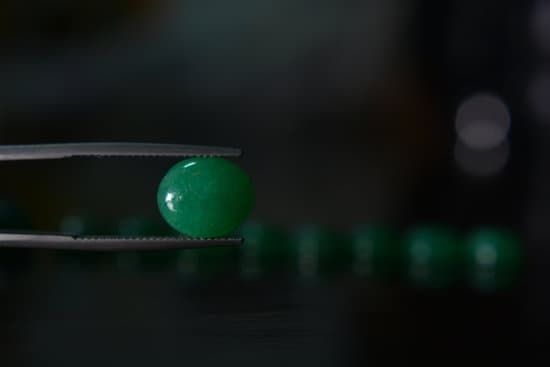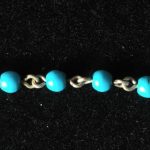The history of jewelry from the 1060s to the 1400s is a rich and fascinating journey that reflects the evolution of human culture, society, and artistry. During this period, jewelry played a significant role in shaping the identity and status of individuals, as well as serving as a form of artistic expression. From early medieval societies to the flourishing regions of different cultures, jewelry became an integral part of daily life, carrying with it deep symbolism and meaning.
In order to understand the significance of jewelry during this time period, it is essential to explore the materials and techniques used in its making. The craftsmanship of medieval jewelry reflected not only the available resources but also the creativity and skill of artisans. Furthermore, studying the role played by influential historical figures sheds light on how their preferences and patronage influenced jewelry designs.
Moreover, religion and superstition also had a profound impact on jewelry trends in the medieval era. As such, religious symbols and motifs often found their way into jewelry designs, serving as expressions of faith or protection against perceived supernatural forces. By delving into these aspects, we gain a deeper understanding of how jewelry was intertwined with various cultural beliefs and practices during this transformative period in history.
The Significance of Jewelry in Early Medieval Society
Jewelry has always played a significant role in society, and this was especially true during the early medieval period from the 1060s to the 1400s. The significance of jewelry during this time went far beyond mere adornment. It served as a symbol of status, wealth, and power, often indicating social rank and belonging to a particular class or group within society.
During the early medieval era, jewelry was not just limited to the nobility and royalty; it was also worn by clergy members and even commoners. The types of jewelry worn varied greatly depending on one’s social standing. For example, while nobles would wear elaborate pieces adorned with precious gems and metals, commoners would have simpler designs made from less expensive materials.
Materials Used in Medieval Jewelry
- Gold
- Silver
- Precious gemstones such as rubies, sapphires, and emeralds
- Pearls
- Enamel
The techniques used in crafting jewelry during this time were also highly skilled and specialized. Artisans were proficient in metalworking, stone setting, filigree work, and enameling. These skills were passed down through generations and were highly valued within medieval society.
The Symbolism of Medieval Jewelry
In addition to serving as status symbols, medieval jewelry often held deep symbolic meanings. For example:
- The fleur-de-lis was associated with royalty and symbolized purity.
- The use of animal motifs such as dragons or serpents represented power.
- Crosses and religious symbols were prevalent in jewelry due to the strong influence of Christianity during this time period.
This symbolism added layers of meaning to jewelry that extended beyond its aesthetic appeal. As such, it is clear that the significance of jewelry in early medieval society cannot be underestimated.
Materials and Techniques Used in Jewelry Making During This Time Period
During the medieval era, jewelry making was a highly skilled and revered art form. Craftsmen used a variety of materials and techniques to create intricate and exquisite pieces that showcased their creativity and expertise.
Materials
One of the most common materials used in jewelry making during this time period was precious metals such as gold and silver. These metals were often adorned with precious gemstones like sapphires, rubies, and emeralds to add color and beauty to the pieces. Additionally, craftsmen also worked with less expensive materials such as copper and brass to create more accessible jewelry for the lower classes.
Techniques
The techniques used in medieval jewelry making were diverse and innovative. Craftsmen employed methods such as filigree, where intricate patterns are created using fine wires or threads of metal; granulation, which involves fusing tiny metal balls onto a metal surface; and cloisonné enameling, where compartments are filled with colored glass to create vibrant designs. These techniques required great skill and precision, highlighting the craftsmanship of the artisans of this time period.
Jewelers also used casting, carving, and engraving to shape metals into different forms, creating beautiful pendants, rings, brooches, and other adornments. The use of these various materials and techniques resulted in jewelry pieces that showcased the skill and artistry of medieval craftsmen while also reflecting the aesthetic preferences of the time.
Role of Jewelry in Different Cultures and Regions During the Medieval Era
During the medieval era, jewelry played a significant role in different cultures and regions, serving as a symbol of status, power, and identity. In Europe, the use of jewelry was not limited to the nobility; it also held cultural and religious significance for common people.
Jewelry was often used as a form of currency or as a means of displaying wealth and social standing. In addition to its decorative function, medieval jewelry served as an indication of a person’s rank in society.
In the Byzantine Empire, jewelry was highly valued and considered an essential part of daily life. The use of precious metals such as gold and silver, combined with intricate designs and gemstones, reflected the opulence of the Byzantine society. Jewelry was commonly worn by both men and women, with elaborate pieces serving as symbols of wealth and prestige.
In the Islamic world, jewelry held religious significance and was often used to adorn clothing and accessories such as belts and headdresses. Intricate designs featuring calligraphy and geometric patterns were popular during this time period. Jewelry served not only as a form of personal adornment but also as a means of expressing one’s faith and belief system.
In Asia, particularly in China and India, jewelry played a vital role in traditional ceremonies and rituals. Pieces were often crafted using techniques unique to each culture, reflecting the artistic heritage of these regions. Jewelry during this era in Asia was intricately designed with symbolic motifs that represented spirituality, nature, and beliefs.
These diverse cultural influences contributed to the rich tapestry of medieval jewelry design, leaving behind a legacy that continues to inspire modern jewelry makers today. The evolution of jewelry across different cultures during this time period provides valuable insights into the craftsmanship and symbolism that defined medieval society.
The Symbolism and Meaning Behind Medieval Jewelry Designs
Religious Symbolism
Christianity played a significant role in shaping the designs of medieval jewelry. Crosses, crucifixes, and depictions of saints were commonly featured in jewelry pieces, serving as symbols of faith and devotion. The use of precious metals and gemstones in religious jewelry also reflected the belief in the importance of spiritual adornment.
Symbolism in Nobility and Royalty
Medieval jewelry was often used to convey status and power. Members of the nobility and royalty adorned themselves with extravagant pieces to assert their wealth and authority. Crowns, scepters, and ornate necklaces were not only symbols of luxury but also served as a visual representation of one’s rank in society.
Social and Cultural Significance
Jewelry designs during this time period also reflected social customs and cultural practices. For example, rings were exchanged as pledges of love and fidelity between couples, while brooches were worn to fasten garments or simply for decorative purposes. These pieces not only carried sentimental significance but also acted as markers of social identity within different classes.
The intricate symbolism found in medieval jewelry designs continues to fascinate historians and art enthusiasts alike, offering valuable insights into the beliefs, values, and societal structures that shaped this fascinating period in history.
Notable Historical Figures and Their Influence on the Jewelry of This Time Period
During the medieval era from the 1060s to the 1400s, several historical figures had a significant influence on the jewelry of this time period. One such notable figure was Eleanor of Aquitaine, who was known for her love of extravagant and opulent jewelry.
As one of the wealthiest and most powerful women in Western Europe, Eleanor set the trend for elaborate and intricate jewelry designs. Her preference for bold statement pieces, often adorned with precious gemstones and intricate metalwork, influenced the jewelry worn by noblewomen across Europe.
Another influential figure during this time period was King Henry I of England, who was known for his patronage of the arts, including jewelry making. King Henry I’s love for luxury and his support for skilled craftsmen led to an increase in the production of high-quality jewelry during his reign. Jewelry became a status symbol among the nobility, with pieces becoming more ornate and extravagant to reflect their wealth and social standing.
Additionally, Saint Louis IX of France also played a significant role in shaping the jewelry trends of the medieval era. As a devout Christian monarch, Saint Louis IX promoted religious symbolism in jewelry designs. Crosses, crucifixes, and religious motifs became popular adornments, reflecting the strong influence of religion on medieval society. The emphasis on spiritual themes in jewelry not only served as a form of piety but also as a display of wealth and prestige.
These historical figures not only dictated the style and design of medieval jewelry but also contributed to shaping its cultural significance. Their influence can still be seen in modern interpretations of medieval jewelry, demonstrating the lasting impact of these figures on the legacy of jewelry design.
The Impact of Religion and Superstition on Jewelry Trends in the Medieval Era
Religion had a strong influence on the types of jewelry worn by individuals during the medieval era. For example, Christians often wore pendants or crosses as a symbol of their faith, while members of royalty showcased religious relics within their jewelry to demonstrate their piety. In addition to Christian symbolism, other religions also influenced jewelry trends in different regions. Islamic jewelry featured intricate geometric patterns and calligraphy reflecting Islamic teachings, while Jewish jewelry often incorporated motifs from the Torah.
Moreover, superstitions also had a major impact on medieval jewelry trends. Many believed that wearing certain gemstones or amulets could provide protection from harm or bring good fortune. This belief led to the widespread use of talismans and amulets in medieval jewelry design.
Additionally, specific rituals were performed during the creation of jewelry to imbue it with protective qualities or luck. These superstitions not only influenced the designs of medieval jewelry but also dictated how it was worn and cared for by individuals seeking spiritual protection or blessings.
- The use of religious symbols in medieval Jewelry
- The influence of Islamic teachings on Jewelry designs
- Superstitions surrounding gemstones and amulets
The Legacy of Medieval Jewelry and Its Influence on Modern Jewelry Design
In conclusion, the history of jewelry from the 1060s to the 1400s holds a significant place in the evolution of jewelry design. During this time period, jewelry played a crucial role in early medieval society, representing status, wealth, and religious beliefs. The materials and techniques used in jewelry making were diverse and reflected the cultural and regional differences of the time.
The symbolism and meaning behind medieval jewelry designs were rich and varied, often influenced by religion and superstition. Notable historical figures also left their mark on the jewelry of this era, with their personal styles and preferences shaping trends in jewelry design. The impact of religion and superstition on jewelry trends was profound, affecting not only the designs but also the materials used.
The legacy of medieval jewelry continues to influence modern jewelry design. Many contemporary designers draw inspiration from medieval motifs, materials, and techniques to create unique pieces that pay homage to this important period in the history of jewelry. The timeless elegance and craftsmanship of medieval jewelry still resonate today, making it an enduring source of inspiration for artists and artisans around the world.
Frequently Asked Questions
What Was Jewelry Like in Medieval Times?
Jewelry in Medieval times was often ornate and symbolic, reflecting the social status and religious beliefs of the wearer. It was commonly made with precious metals like gold and silver, adorned with gemstones or pearls.
What Is the Early History of Jewelry?
The early history of jewelry dates back to ancient civilizations such as Mesopotamia, Egypt, and Greece. These societies used jewelry as a symbol of wealth, power, and religious or cultural significance. Early jewelry was crafted from natural materials like shells, bones, and wood.
What Jewellery Did They Wear in the 60s?
In the 1960s, jewelry reflected the bold and experimental style of the era. Popular trends included large, colorful beaded necklaces, hoop earrings, charm bracelets, and peace sign pendants which were all influenced by the hippie movement. The use of bright psychedelic colors also became prominent in jewelry design during this time.

Welcome to my jewelry blog! My name is Sarah and I am the owner of this blog.
I love making jewelry and sharing my creations with others.
So whether you’re someone who loves wearing jewelry yourself or simply enjoys learning about it, be sure to check out my blog for insightful posts on everything related to this exciting topic!





